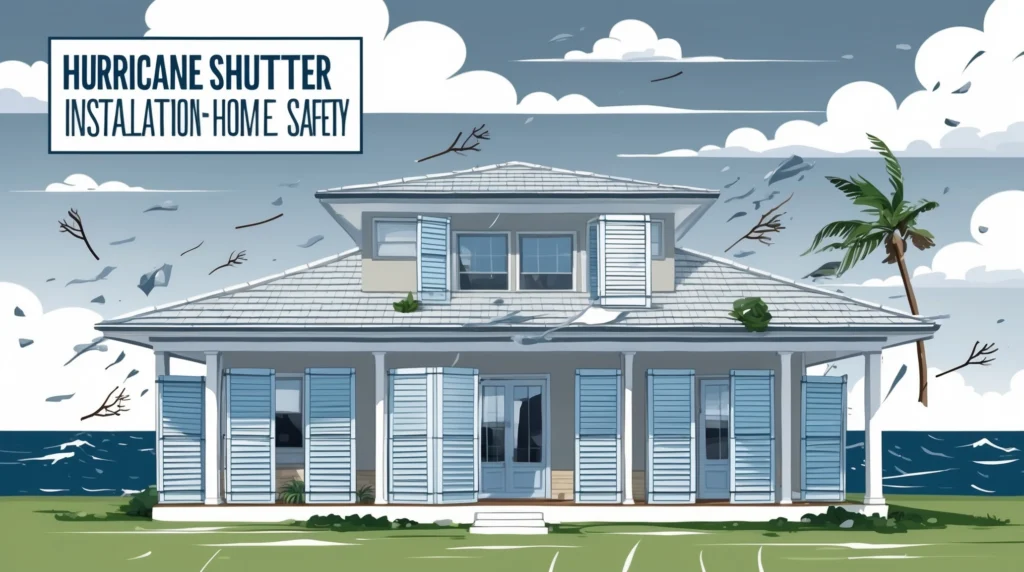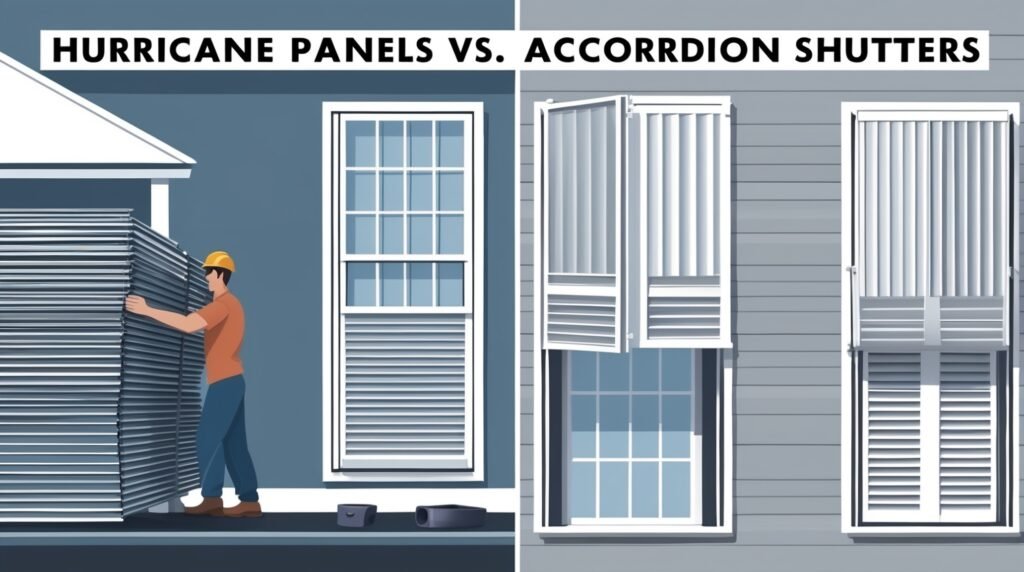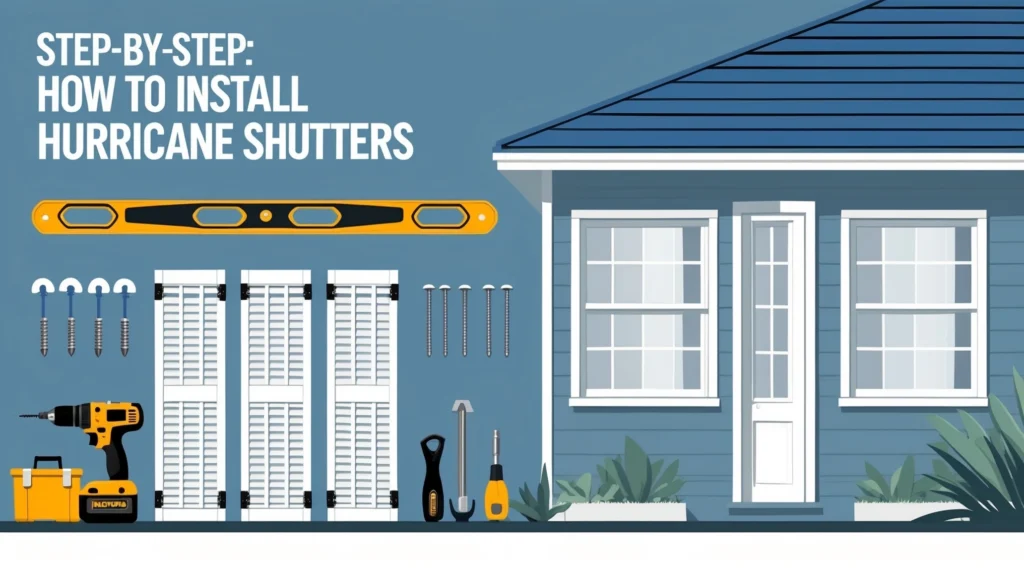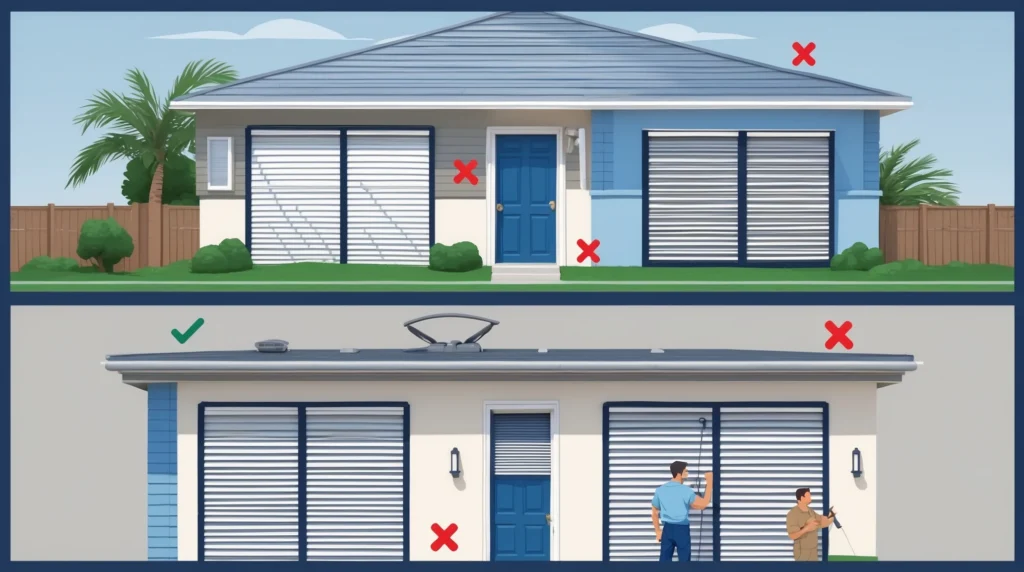When a storm is on the way, knowing how to install hurricane shutters can make all the difference in keeping your home safe. Hurricane shutters help protect your windows from flying debris, heavy winds, and pounding rain. Without shutters, even a strong window can crack, letting dangerous wind and water into your home. Installing them may seem complicated, but with the right guide, you can learn step by step how to do it properly. In this article, we’ll explore different shutter types, how to install them, common mistakes to avoid, and tips for keeping your shutters in great shape. Whether you’re a do-it-yourself homeowner or someone who prefers professional installation, this guide will walk you through everything you need to know.

Why Hurricane Shutter Installation Matters for Home Safety
Storms can bring extreme winds that turn ordinary objects into projectiles. A trash can lid, a roof tile, or even a tree branch can smash into your windows. If the glass breaks, pressure builds inside the home, which can blow the roof off or cause walls to collapse. That’s why hurricane shutter installation is so important. Proper shutters act like armor for your windows and doors. They not only protect your property but also give you peace of mind during hurricane season.
Some key benefits include:
- Safety: Prevents dangerous flying glass.
- Protection: Shields furniture, walls, and floors from water damage.
- Peace of mind: You know your home is secure before a storm arrives.
Understanding Different Types of Storm Shutters
Not all shutters are the same. Choosing the right kind for your home depends on your budget, home design, and how often your area faces storms.
Here are some popular storm shutters installation options:
- Accordion shutters: These fold back like an accordion when not in use. They’re attached permanently to the window frame, making them quick to close before a storm.
- Hurricane panels: Removable panels made of metal or polycarbonate. They’re cost-effective but require storage space.
- Roll-down shutters: Operated by a hand crank or motor. These are easy to use but usually more expensive.
- Colonial and Bahama shutters: Stylish options that also add protection.
Each has its advantages, but the installation method differs slightly.
Accordion Shutter Installation Explained
Accordion shutters installation is a popular choice because of their durability and convenience. They are permanently attached on both sides of a window or door.
Steps include:
- Attach the upper and lower tracks securely.
- Install the shutter panels into the tracks.
- Ensure the panels slide smoothly.
- Lock them in place when closed.
Many homeowners like accordion shutters because they are quick to deploy and don’t require storage like panels.

Hurricane Panels vs. Accordion Shutters
Both hurricane panel installation and accordion shutters protect your home, but they differ in use.
- Panels are removable, making them a good low-cost solution. However, putting them up before each storm takes time.
- Accordion shutters stay in place and can be pulled shut in minutes. They cost more upfront but are easier to manage.
If you prefer long-term convenience, accordion shutters are often the better choice. If budget is your priority, hurricane panels may work best.

Step-by-Step: How to Install Hurricane Shutters
Learning how to do the job right ensures your shutters perform during a storm.
Preparing Your Home Before Installation
- Inspect all windows and doors to know where shutters are needed.
- Gather tools such as a drill, screws, anchors, and a level.
- Read the manufacturer’s instructions carefully before beginning.
How to Put Up Hurricane Shutters Safely
When putting up hurricane shutters, always:
- Use a sturdy ladder on even ground.
- Wear gloves and protective eyewear.
- Secure shutters firmly to avoid gaps.
How to Install Metal Hurricane Shutters
For metal hurricane shutter installation:
- Install tracks (top and bottom).
- Slide panels into place.
- Tighten bolts and screws with anchors.
- Double-check that panels are snug.
Installing Hurricane Panels Without Tracks
Some homeowners prefer how to install hurricane panels without tracks. In this case, shutters are mounted directly to the wall with bolts or clips. While it saves on track installation, it takes longer to secure each panel.
Specialty Installations for Doors & Windows
Not all shutters are designed for windows alone. Doors also need strong protection.
How to Install Hurricane Shutters on Sliding Glass Doors
Large patio doors are vulnerable. Accordion shutters for sliding glass doors or strong panels work best. Make sure tracks are properly aligned and shutters can lock securely.
How to Install Hurricane Shutters on Front Door
For the front door, storm protection shutters can be attached directly around the door frame. Proper sealing is critical so the door does not fly open during a storm.
DIY vs Professional Hurricane Shutter Installation
Some homeowners enjoy DIY hurricane shutters projects, while others prefer hiring a professional. Both options have benefits.
Easy-to-Install Hurricane Shutters & DIY Options
Products like easy to install hurricane shutters or diy accordion shutters are available for handy homeowners. Popular DIY materials include plywood, corrugated metal, or even polycarbonate sheets. However, do it yourself hurricane shutters must be measured and cut carefully. Mistakes in installation can leave gaps that let in wind and water.
When to Call a Hurricane Shutter Installer
If you own a large home, or want roll down shutter installation or sliding storm shutters, hiring a professional hurricane shutter installer is often safer. Experts know how to mount shutters to resist high winds.

Common Mistakes to Avoid When Putting Up Hurricane Shutters
When installing hurricane shutters, avoid these errors:
- Not tightening screws properly.
- Forgetting to cover sliding doors.
- Using the wrong size panels.
- Waiting until the last minute before a storm.
By avoiding these mistakes, you’ll ensure your shutters perform their job.
Maintenance Tips After Installing Hurricane Shutters
Once hurricane shutters are installed, they need regular care:
- Lubricate tracks on accordion and roll-down shutters.
- Clean panels before storing them.
- Inspect for rust, especially on corrugated metal shutters.
- Replace damaged screws or anchors right away.
Regular maintenance means your shutters will be ready year after year.
Cost Considerations: DIY Hurricane Shutters vs Professional Install
The cost of hurricane shutters varies based on type and installation method.
- DIY hurricane shutters like plywood or homemade versions are cheapest, but less reliable.
- Accordion and roll-down shutters are more expensive but last longer and offer easier use.
- Professional installation adds to the cost but ensures accuracy and safety.
Think of shutters as an investment in protecting your home.
Local Expertise: Installing Hurricane Shutters in Riverside, CA
For homeowners in Riverside, CA, preparing for severe weather means choosing the right shutters and knowing they’re installed correctly. While California may not face hurricanes as often as coastal states, high winds and storms still pose risks. Working with a trusted company like Shutterandshades ensures you get quality products and expert installation tailored to your home.
Conclusion: Stronger Protection with shutterandshades
Installing hurricane shutters is one of the smartest steps you can take to protect your home from storm damage. From accordion shutter installation to hurricane panel installation, each method offers unique benefits. Whether you prefer to do it yourself or hire a professional, the key is to ensure shutters are installed correctly, secured tightly, and maintained properly. For homeowners, hurricane shutters are not just about safety they bring peace of mind during every storm season. Companies like shutterandshades provide expert help, durable products, and guidance for every type of shutter installation.
When the next storm approaches, you’ll be glad you took the time to prepare.
Ready to protect your home? Call today to explore hurricane shutter options and get professional guidance tailored to your needs.
